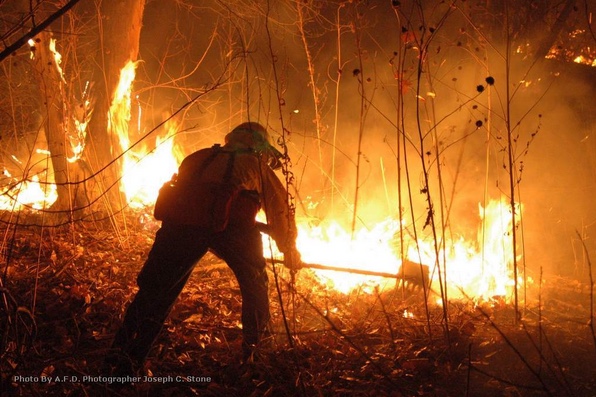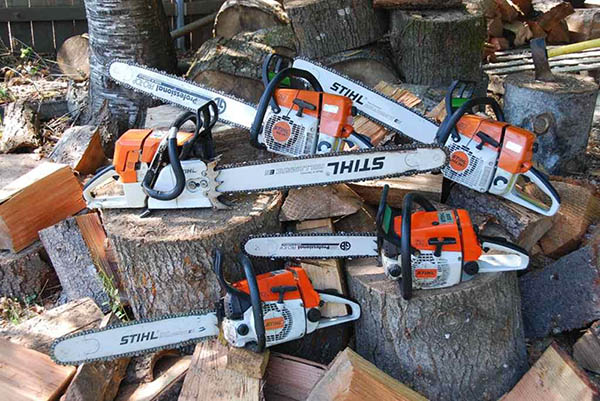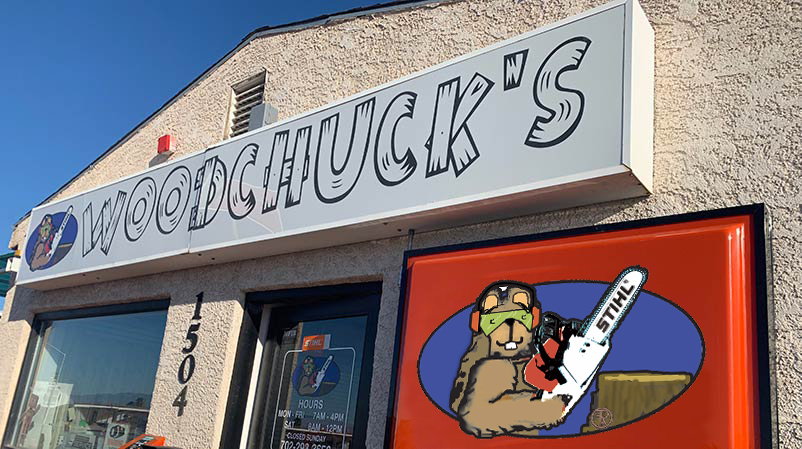Please give us a like on Facebook and keep up with any news from Woodchuck's.
Did we mention...
10 Standard Fire Orders
- Keep informed on fire weather conditions and forecasts.
- Know what your fire is doing at all times.
- Base all actions on current and expected behavior of the fire.
- Identify escape routes and safety zones and make them known.
- Post lookouts when there is possible danger.
- Be alert. Keep calm. Think clearly. Act decisively.
- Maintain prompt communications with your forces, your supervisor and adjoining forces.
- Give clear instructions and ensure they are understood.
- Maintain control of your forces at all times.
- Fight fire aggressively, having provided for safety first.
Source: U.S. Forest Service
Wildland Fire Preparedness
With the Carpenter 1 wildland fire being right in our backyard in Las Vegas, it reminds the population of how close Mother Nature can get, and be fierce. Woodchuck’s is able to help you with your property maintenance equipment, the chainsaws and more, to help protect you and your property from loss. Stop by our store to talk with us about the many ways we can help with your landscape equipment.


The main piece of equipment firefighters use to attack wildland fires is the chainsaw. Woodchuck’s exclusively carries the Stil line of saws, one of the primary saws used by the elite wildland firefighters. We help maintain saws for many government and professionals. Use what the pros use, because it is the backbone of the firefighter.
A few of the organizations we assist:
- US Park Service
- US Forest Service
- US Bureau of Land Management
One of the best ways to protect your property against a wildland fire is to have a defensible zone around your buildings on your property.
Defensible space is essential to improve your home’s chance of surviving a wildfire. It’s the buffer you create between a building on your property and the grass, trees, shrubs, or any wildland area that surround it. This space is needed to slow or stop the spread of wildfire and it protects your home from catching fire – either from direct flame contact or radiant heat. Defensible space is also important for the protection of the firefighters defending your home.
Zone 1
Zone 1 extends 30 feet* out from buildings, structures, decks, etc.
- Remove all dead plants, grass and weeds (vegetation).
- Remove dead or dry leaves and pine needles from your yard, roof and rain gutters.
- Trim trees regularly to keep branches a minimum of 10 feet from other trees.
- Remove branches that hang over your roof and keep dead branches 10 feet away from your chimney.
- Relocate wood piles into Zone 2.
- Remove or prune flammable plants and shrubs near windows.
- Remove vegetation and items that could catch fire from around and under decks.
- Create a separation between trees, shrubs and items that could catch fire, such as patio furniture, wood piles, swing sets, etc.
Zone 2
- Cut or mow annual grass down to a maximum height of 4 inches.
- Create horizontal spacing between shrubs and trees.
- Create vertical spacing between grass, shrubs and trees.
- Remove fallen leaves, needles, twigs, bark, cones, and small branches. However, they may be permitted to a depth of 3 inches if erosion control is an issue.
- No rubbish or brush piles – always remove trimmings, brush and other flammable materials.
Plant and Tree Spacing
The spacing between grass, shrubs, and trees is crucial to reduce the spread of wildfires. The spacing needed is determined by the type and size of brush and trees, as well as the slope of the land. For example, a property on a steep slope with larger vegetation requires greater spacing between trees and shrubs than a level property that has small, sparse vegetation.
Vertical Spacing
Remove all tree branches at least 6 feet from the ground. Allow extra vertical space between shrubs and trees. Lack of vertical space can allow a fire to move from the ground to the brush to the tree tops like a ladder.
We will be hapy to speak with you and/or your group about wildland fire safety and defensible zones, just email, phone. or stop by.

